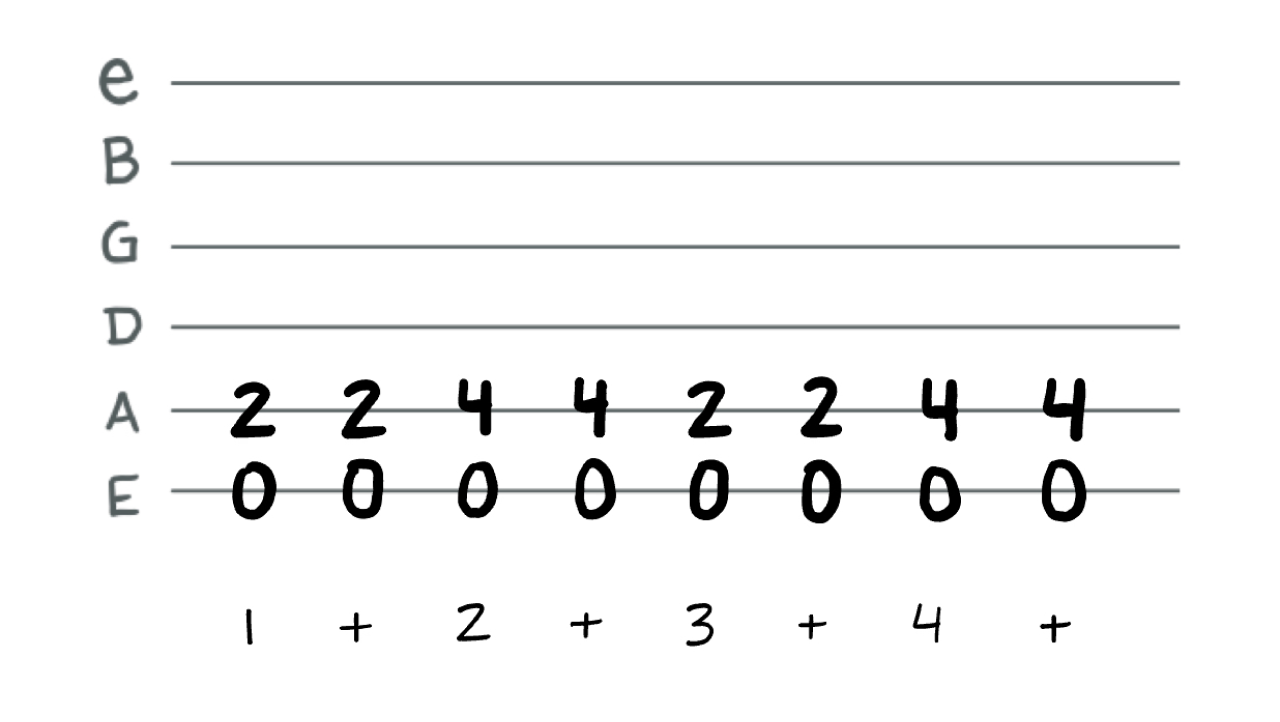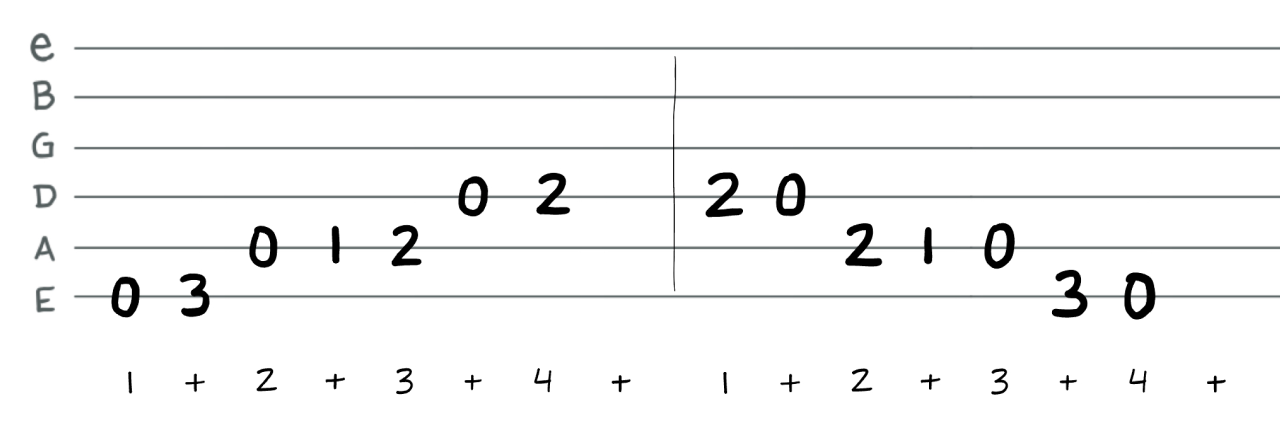Let’s listen to a few examples of the straight vs. shuffle rhythm, as applied to some very basic riffs. In each example below, I’m playing the exact same thing, as far as the notes go — but it’s the rhythmic feel that’s different. All examples are played at 80 beats per minute.
There’s on tab for this one… I’m simply covering all the strings with my fretting hand, while strumming down and up in repetition. All down-strums happen on the quarter notes (1-2-3-4), with all up-strums happening on the “and” counts in between.
This is a basic 2-string shuffle, which I’ll teach in the next lesson. Notice how different this sounds if played straight vs. with a shuffle feel!

Here’s one octave of the blues scale, ascending and then descending. I’ll teach this scale in a future lesson… but for now, notice how rhythm plays a role even when playing a sequence of individual notes.
